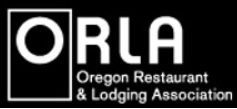 By Oregon Restaurant & Lodging Association,
By Oregon Restaurant & Lodging Association,
Changes in our country relating to overtime work are finally upon us. As of December 1, 2016
employers will be required to pay employees classified as exempt from overtime a salary of at least $47,476 a year or $913 a week. If an employee currently defined as exempt does not make $47,476 a year then they will be eligible for time and a half pay for all hours worked in a week over 40 hours just like non-exempt employees. The new federal law is putting immediate pressure on the hospitality industry to determine what changes to make, if any, to labor structures within their operations.
Recently the Oregon Restaurant & Lodging Association conducted an online survey of members to provide insight to operators on how their peers plan on handling such a significant change in labor law requirements.
A staggering 45 percent of respondents will be reclassifying current “exempt” employees as “non-exempt” employees and will pay overtime for any work in a week over 40 hours. Over 41 percent responded to our question relating to labor changes by clicking “other” with the majority saying the new rule will not apply to their current business as they do not employ exempt employees. The second most popular answer of those clicking “other” appears to be a hybrid approach. For exempt employees close to the new $47,476 a year threshold they may move them up to that new salary standard to keep intact their salaried position and the flexibility to work over 40 hours as needed in the business without a labor cost obligation of paying time and a half for those additional hours. For others not close to the threshold, they may be reclassified and held to 40 hours a week of work or less. And lastly, 14 percent of respondents will continue classifying their managers as “exempt” employees and raise their salaries to the $47,476 threshold so overtime pay does not apply.
As the results show, very few operational tactics are one-size-fits-all in their execution. We are an industry filled with wide ranging business models, target audiences, operational margins, and company cultures. We continue to hold the rank of being the second largest private sector employer in Oregon behind healthcare. These changes in how business is conducted can and will have unintended consequences. One of the more concerning outcomes are any changes made to those in transitional positions working hard to acquire the skills to become a manager.
It begs the question, who is ultimately responsible for professional development? The overtime rule was implemented by the U.S. Department of Labor to create forceful direction to employers who were “underpaying” managers while working them 50-60 hours a week without overtime pay. But what about the hard working 20-somethings eager to work those extra hours as an assistant manager to develop professionally? Who is responsible for the new limitations put on their ability to pursue that general manager position? Will they hold the government responsible or their employer for their unwillingness to pay them overtime to develop those skills?
Like most things in life, I believe the answer lies in the middle. Businesses will adjust as they always do and sacrifices will be made to employee morale when reclassification to hourly positions from salaried positions takes full effect. But those that will succeed will find creative ways to create professional development opportunities in place for employees looking to move up the ladder. Some will choose to incorporate aspects of managerial training within the constraints of the 40 hour work week while others may choose to pay the new $47,476 a year salary or simply pay overtime from now on for any necessary training hours beyond 40 hours a week.
The face of American business is changing and we are committed to doing our part to share helpful information about how savvy businesspeople are choosing to adapt to those changes.
Disclaimer: Articles featured on Oregon Report are the creation, responsibility and opinion of the authoring individual or organization which is featured at the top of every article.


